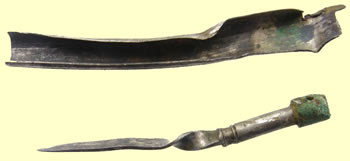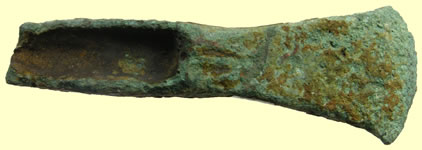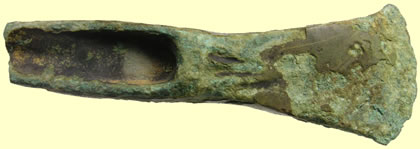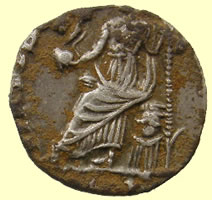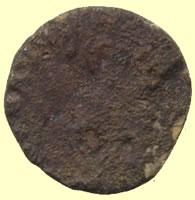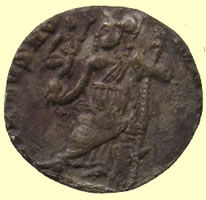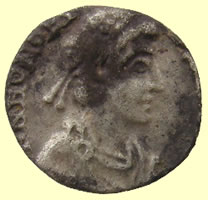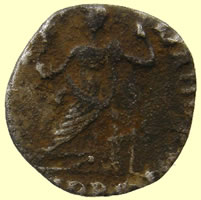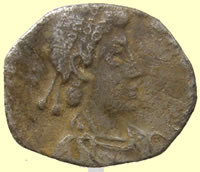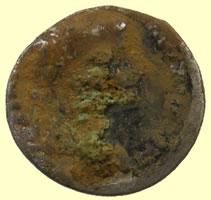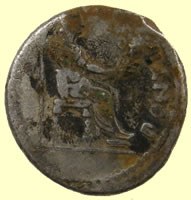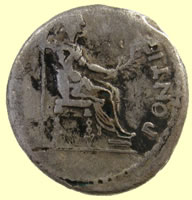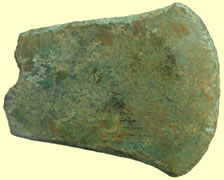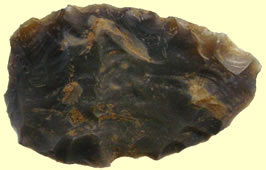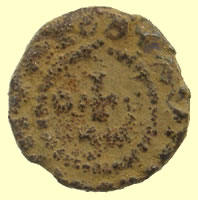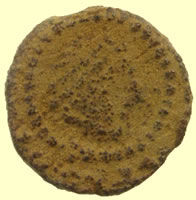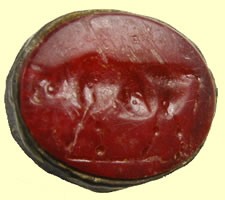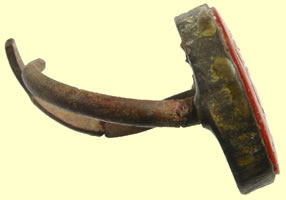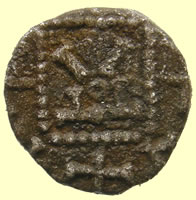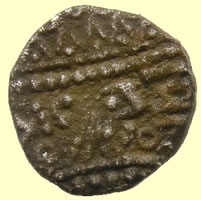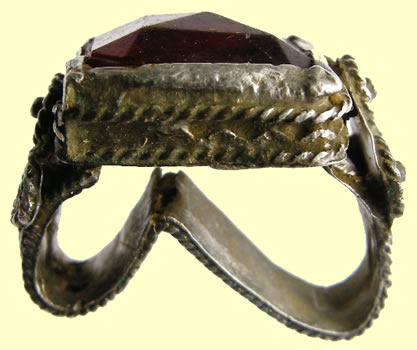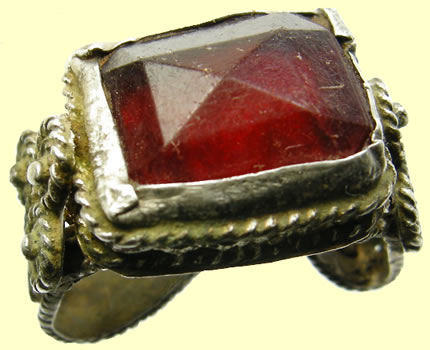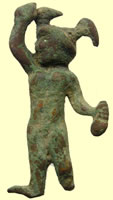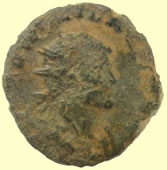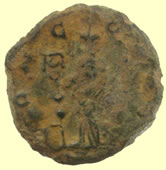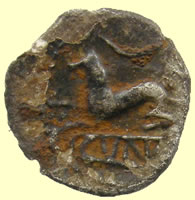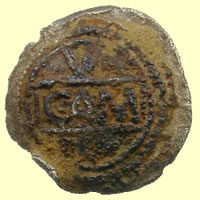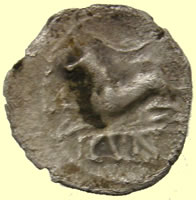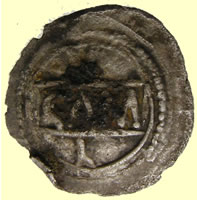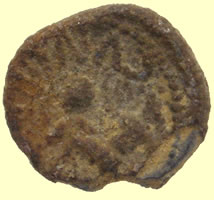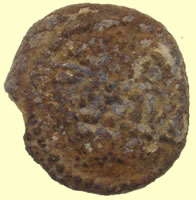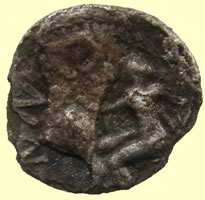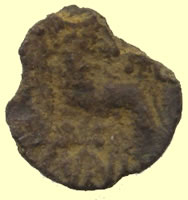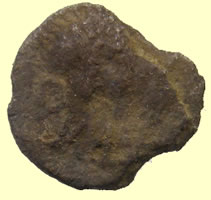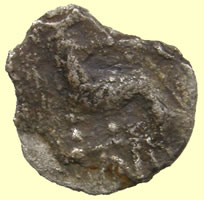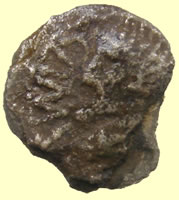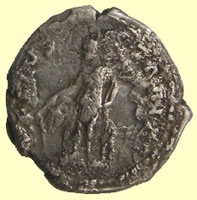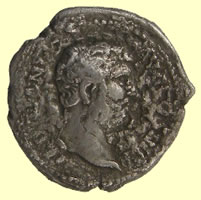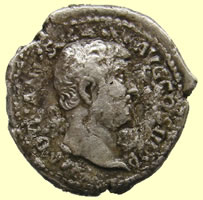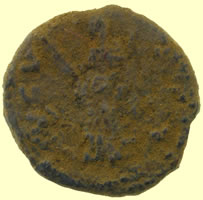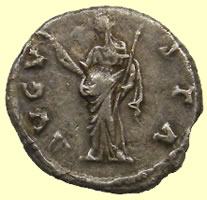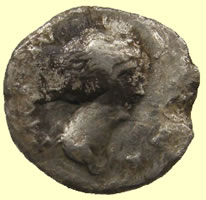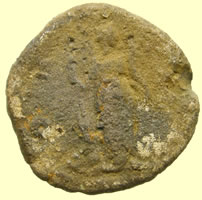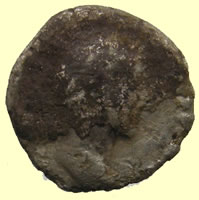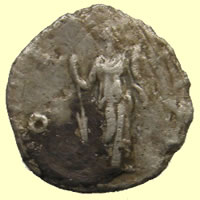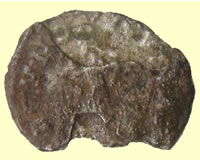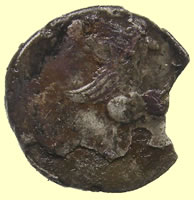

Metal detecting holidays in England with the World's most successful metal detecting club.
Twinned with Midwest Historical Research Society USA
2012 Oct finds page 2 |
||||||||||
  |
||||||||||
| 1844 Victoria gold half sovereign | ||||||||||
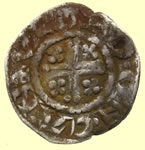 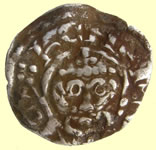 |
 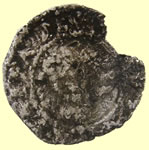 |
|||||||||
1189-1199 Richard 1st hammered silver short cross penny - Class 3 Obv HENRICVS REX Rev ON.CAN + WLARD - Moneyer Vlard of Canterbury mint |
1603 James 1st hammered silver penny | |||||||||
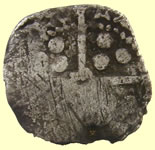 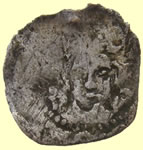 |
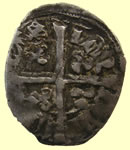 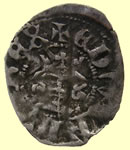 |
|||||||||
1413 Henry V hammered silver penny - quadrefoil with pellet on rev York archbishop issue |
1344 Edward III hammered silver half penny - Florin coinage Obv EDWARDVS REX Rev CIVI/TAS/LON/DON London mint 0.65g, 16.54mm |
|||||||||
  |
 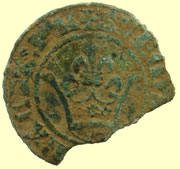 |
|||||||||
| 1920 George V milled silve rhalf crown ( 30 pence) | 1340 AD French Jetton Crown introduced in 1340 by Philip VI (1328-50) Royal Crown with 3 rosettes across body of crown Rev Triple banded straight cross fleuretty AV |
|||||||||
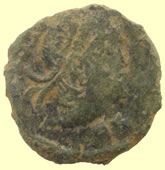 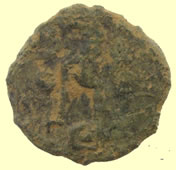 |
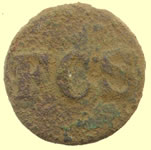 |
 |
||||||||
| Mid 4thc Roman bronze coin sent for ID | FCS button ? | 18thC Royal artillery button | ||||||||
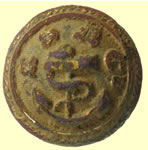 |
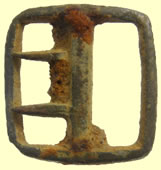 |
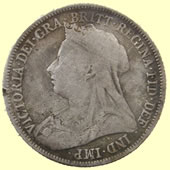  |
||||||||
| Not known Royal Navy button | 1720-1790 | 1893 Victoria milled silver shilling | ||||||||
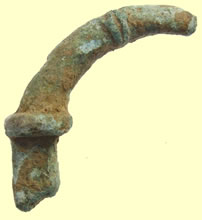 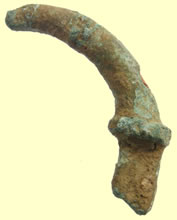 |
||||||||||
| Roman bronze terret ring | ||||||||||
 |
 |
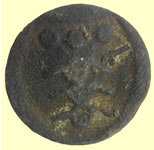 |
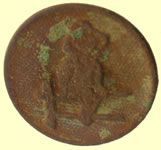 |
|||||||
| Gorgian watch winder | 18thC clog fastener | 18thC Royal artillery button | 19thC girl sitting on fence button | |||||||
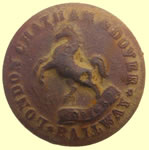 |
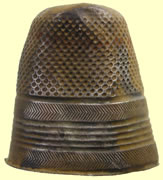 |
 |
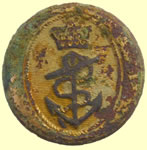 |
|||||||
| 1859- 1923 Chatham and Dover Railways button | Victorian silver thimble | Capt / Commander - 1774-1787 | RN Capt / Commander - 1812 RN Lieutenant - 1812 RN Midshipman - 1812 RN Volunteer Gr.I - 1812 |
|||||||
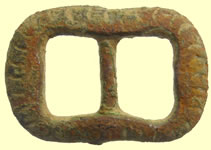 |
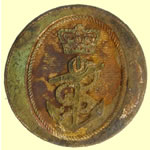 |
|
||||||||
| Circa AD 1600 - 1699 | RN Capt / Commander - 1812 RN Lieutenant - 1812 RN Midshipman - 1812 RN Volunteer Gr.I - 1812 |
Victorian silver tooth pick and holder | ||||||||
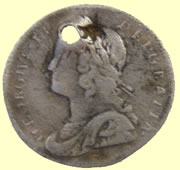  |
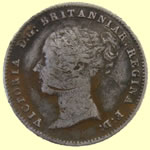  |
|||||||||
| 1767 George II milled silver 2 pence | 1843 Victoria milled silver 4 pence | |||||||||
  |
 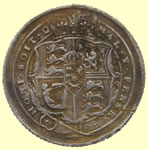 |
|||||||||
1344 Edward III hammered silver half penny - Florin coinage Obv EDWAR ANGLE DNS HYB Rev CIVI/TAS/LON/DON London mint |
1816 George III milled silver sixpence | |||||||||
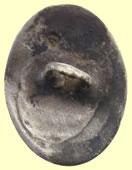 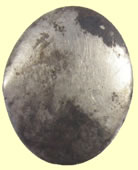 |
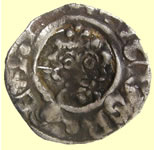 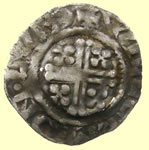 |
|||||||||
| Georgian silver cuff link - Maker 'A' | 1180- 1189 Henry II hammered silver short cross penny - Class 1a Obv HENRICVS REX Rev WILLELM ON LVN - Moneyer Willelm of London mint |
|||||||||
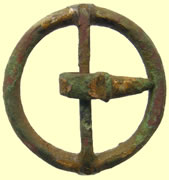 |
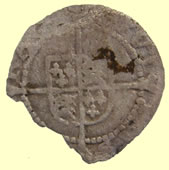 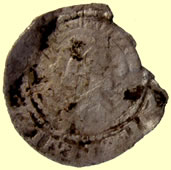 |
|||||||||
| Medieval gilded annular buckle | 1544-7 Henry VIII hammered silver half groat Rev CIVI/TAS/EBO/RACI - York mint |
|||||||||
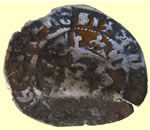  |
  |
|||||||||
1361- 69 Edward III hammered silver penny - Treaty period X is seriffed in Rex Obv ED ***REX ANGLI Rev CIVI/TAS/EBO/RACI - York mint |
1820 George III milled silver sixpence shilling | |||||||||
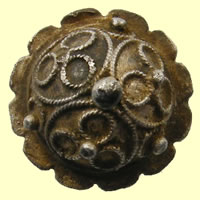 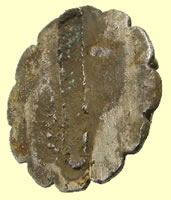 |
||||||||||
| 16thC Tudor gold on silver mount - reported to museum as treasure | ||||||||||
 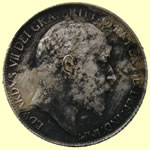 |
  |
|||||||||
| 1902 Edward VII milled silver sixpence | 13thC coin weight | |||||||||
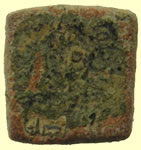  |
 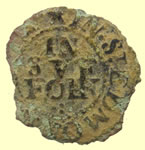 |
|||||||||
| 16thC coin weight |
Bury St. Edmunds, Frances Smith 1666 farthing token:
Obv: *FRANCES*SMITH around twisted wire inner circle, .*. 1666 .*. in three lines within. Rev: *IN.ST.EDMONDS.BVRY around twisted wire inner circle, IN SVF FOLK in three lines within
|
|||||||||
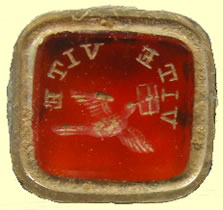 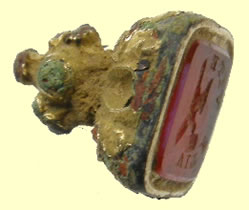 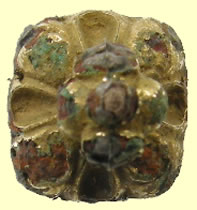 |
||||||||||
Georgian fob seal - VITE VITE Means Quickly quickly - Letter delivery stamp ? |
||||||||||
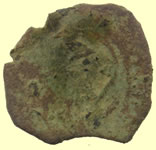 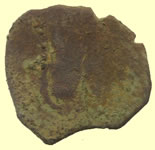 |
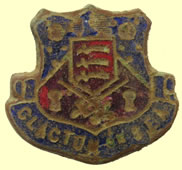 |
 |
||||||||
1652, 8 Maravedis revalidated with VIII counterstamp on 8 Maravedis of 1625 of uncertain mint, Felipe IV (1621-1665) of Spain |
Clacton on Sea enamelled badge | 19thC livery button | ||||||||
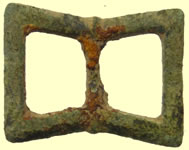 |
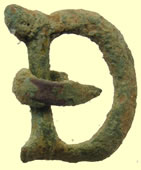 |
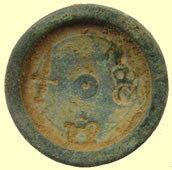 |
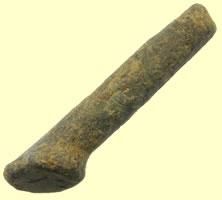 |
|||||||
| 1500-1650 buckle | 1550-1700 buckle | George II trade weight - Crown G London | Medieval pot leg | |||||||
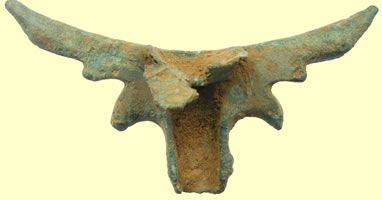 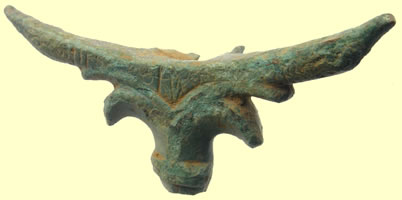 |
||||||||||
| Medieval pot rest ? circle and line decoration - one for the museum | ||||||||||
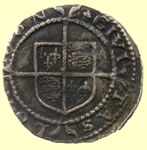  |
 |
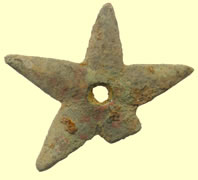 |
||||||||
| 1573-4 Elizabeth 1st hammered silver penny - acorn mint mark | Medieval harness cheek piece | Post medieval spur rowel | ||||||||
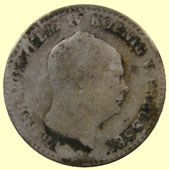 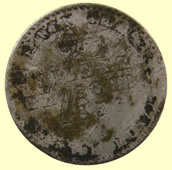 |
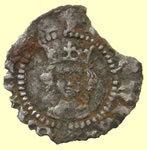 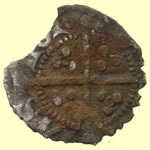 |
|||||||||
1856 Germany German States Prussia Friedrich Wilhelm IV Silver Thaler The Kingdom of Prussia (German States, located in North Central Germany, came into being in 1701 |
1422- 61 Henry VI hammered silvber halfpenny - Annulet issue, Roundabout cross Extra annulet in two qtrs on Rev Obv + HENRIC x REX x ANGL Rev CIVI/TAS/LON/DON London mint |
|||||||||
 |
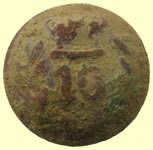 |
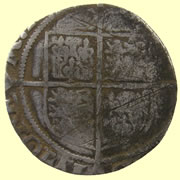 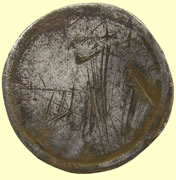 |
||||||||
| 15thC lead token | 16th Regiment of foot button O/R's - 1855-1881 |
16thC Elizabeth 1st hammered silver sixpence | ||||||||
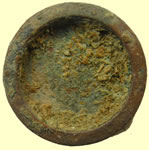 |
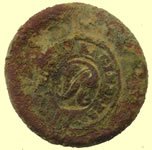 |
 |
 |
|||||||
| Georgian trade weight | Victorian Royal Engineers button | 1500-1650 buckle | 1500-1700 mount | |||||||
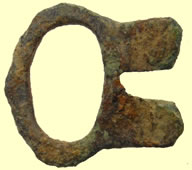 |
 |
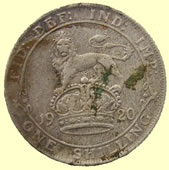  |
||||||||
| Medieval buckle | Roman buckle tongue | 1920 George V milled silver shilling | ||||||||
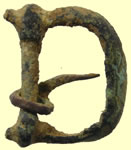 |
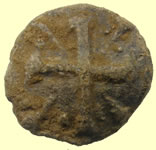 |
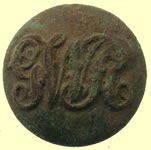 |
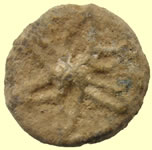 |
|||||||
| 1500-1650 buckle | 15thC lead token | Great Western railways button | 15thC lead token | |||||||
 |
 |
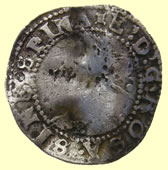 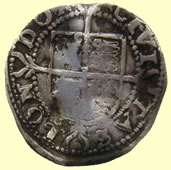 |
||||||||
| Saxon stirup terminal | 19thC livery button | 1594 - 6 Elizabeth 1st hammered silver half groat - Woolpack mint mark | ||||||||
|
||||||||||
Bronze Age (c.1500-1400BC) cast copper alloy primary shield pattern palstave, dating to the Acton Park Phase 137.33mm L x 49.01mm W |
||||||||||
|
||||||||||
5 - 4th/5thC Roman silver coin hoard found - reported to museum as a hoard Treasure number of 2012 T729 |
||||||||||
1st/2nd C Roman silver coin - 'cooking' to remove crust I can't give you much detail about it in this condition excpt to say that it's centuries earlier than the siliquae. Mark |
||||||||||
2000 BC Early Bronze Age flat axe 74.05mm L x 59.73mm W |
||||||||||
11,000 BC Stone age flint spear head 56.35mm L x 35.64mm W |
||||||||||
Primary Saxon silver sceat 600- 700 AD - sent to Fitzwilliam museum for recording and ID |
||||||||||
   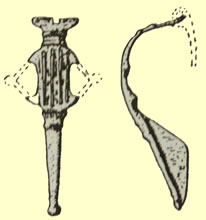 |
||||||||||
| Roman fibular brooch - Hod hill type - 1st C AD - openwork type | ||||||||||
Neat Georgian seal matrix |
||||||||||
 |
  |
|||||||||
| 9 carat gold chain | 1249 Alexander II Scottish hammered silver half penny Obv ALEXANDER REX Rev PER/RAI/ Moneyer Rainald of Perth mint |
|||||||||
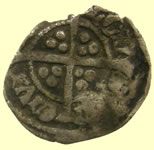 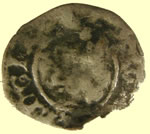 |
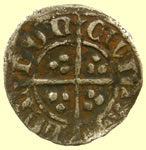 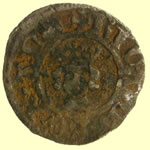 |
|||||||||
1377 - 99 Richard II hammered silver half penny - Type 4 (late) Obv +RICARD x REX x ANGLIE Rev CIVI/TAS/LON/DON London mint 0.48g, 15.03mm |
1377 - 99 Richard II hammered silver half penny - Type 1n Obv +RICARD.REX.ANG Rev CIVI/TAS/LON/DON London mint 13.9mm,0.55g |
|||||||||
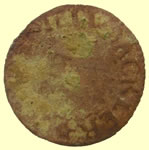 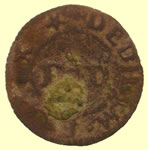 |
 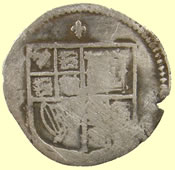 |
|||||||||
1666 Nathaniel Backler of Dedham Copper trade farthing |
1604-5 James 1st hammered silver half groat - First coinage Lis mint mark | |||||||||
  |
||||||||||
Mint Roman 4thC bronze Roman sent for ID - 2.64g, 19.33mm Cool find - Considered a very desirable piece in Britain as it is Allectus, the 2nd (and final) emperor of the short-lived British Roman Empire founded by Carausius (287-293 AD) rather than being executed for treason when the Empire found out that he saw how being a pirate was a better gig than catching pirates for the Empire. Allectus (293-296 AD) evidently didn't have the same leadership acumen as Carausius so his reign was brought to a relatively quick and ignominious end by the Roman emperor Constantius I - father of Constantine the Great. This is the VIRTVS AVG - Galley type of radiate "quinarius" or half-antoninianus. The reverse exergue seems to be QL - and if so, it's from the mint of London. If it's QC - and I can't be certain from the photo which is - it would be from Colchester. Mark
|
||||||||||
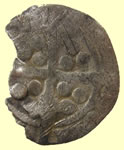 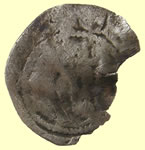 |
  |
|||||||||
| 1327 Edward III hammered silver penny - Cross 3 | 1739 George II milled silver sixpence | |||||||||
 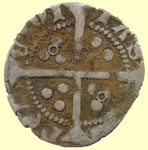 |
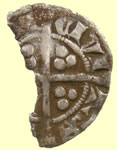 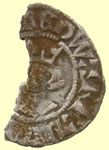 |
|||||||||
1422- 27 Henry VI hammered silver penny - annulet issue Ovd HENRIVS REX ANGLIE Rev CIVI/TAS/LON/DON - London mint |
1344 Edward III hammered silver penny -Cross 1 Obv EDWAR R ANG *** Rev CIVI/TAS/** |
|||||||||
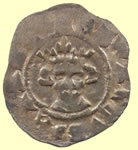 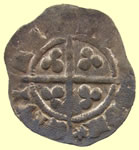  |
||||||||||
Unique coin - The rose in rev legend only appears in Henry VI coins of the Rosette Mascule issue. This coin is an 1464/5 Light coinage Edward IV which has an initial mark rose Obv EDWARDVS REX ANGL Rev CIVI/TAS/LON/DON - London mint |
||||||||||
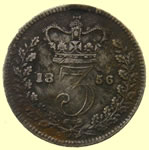 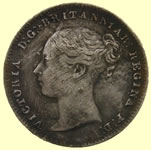 |
 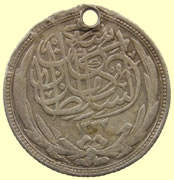 |
|||||||||
| 1856 Victoria milled silver 3 pence | 1917 2 Piastres silver coin EGYPT PALESTINE 2 PIASTRES COIN
|
|||||||||
 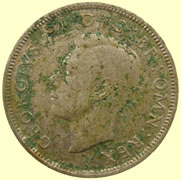 |
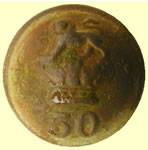 |
 |
||||||||
| 1940 George VI milled silver florin (24 pence) | 50th Regiment of foot button | 15thC lead token | ||||||||
 |
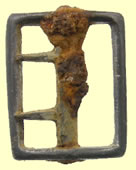 |
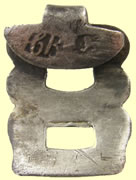 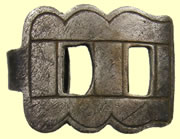 |
||||||||
| Victorian silver jewelry item | 1720-1790 buckle | 18thC silver clog fastener - Maker CB | ||||||||
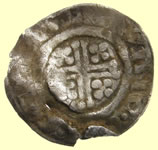  |
 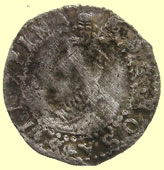 |
|||||||||
1189-1199 Richard I short cross hammered silver penny Class 4b Obv HENRIVS REX Rev Moneyer Goldwine |
1592-5 Elizabeth 1st hammered silver 3 pence - Tun mint mark | |||||||||
  |
 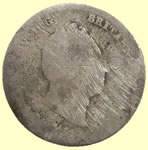 |
|||||||||
| 1215 Henry III hammered silver short cross half penny | 1836 William IV milled silver 4 pence | |||||||||
 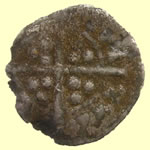 |
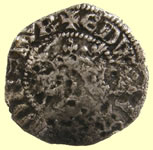 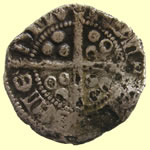 |
|||||||||
1344 Edward III hammered silver farthing
|
1327 Edward III hammered silver penny -Cross 3 Class 15d Obv EDWAR *** DNS HYB Rev SCIE/DMV/NDI - Bury St Edmunds mint |
|||||||||
Large 1st Roman bronze - coin sent for ID This one portrays Antoninus Pius (138-161 AD) on the obverse. The reverse shows some standing (female, likely) allegorical personification, but there are just not enough features discernable in this photo to be certain which of several dozen possibilities it might be. I spent some time searching for a reverse legend with a "D" in the proper place, but couldn't find anything so I may be misinterpreting what appears to be a "D" at around 2:30 on the reverse. Mark |
||||||||||
 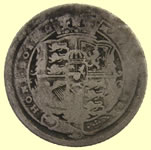 |
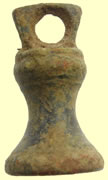 |
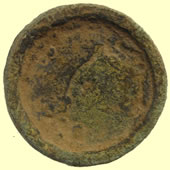 |
||||||||
| 1816 George III milled silver sixpence | Georgian bell type trade weight | Georgian trade weight | ||||||||
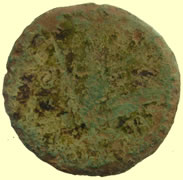 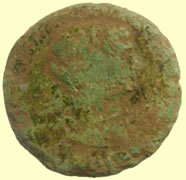 |
||||||||||
Large 1st Roman bronze - coin sent for ID This one is almost certainly a sestertius of Trajan (it's around 35+mm in diameter, right?) the crowded obverse legend - Trajan had the longest obverse legends the Romans ever committed to coin, up to 75 characters - and the unmistakeable "bowling-ball" head make Trajan (98-117 AD) an almost certain call on this one. Unfortunately, there's not enough discernable on the reverse to say any more than just Trajan. Mark |
||||||||||
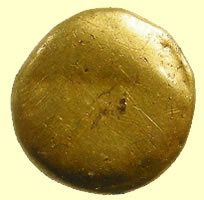  |
||||||||||
Continental Iron Age Gallo-Belgic DC uninscribed gold quarter stater, Gallo-Belgic DC , dating circa 70-50 BC. VA 69-1. Sent to Fitzwilliam museum for recording 1.60g, 9.43mm This is a scarce variant of Gallo-Belgic D, the Face type, Scheers seies 14, my Gallo-Belgic Cd. On one side there's a very worn 'boat' design and on the other a large, kidney shaped blob, also very worn, that looks like an outline face on other coins. In 2003 I suggested they were struck by eastern neighbours of the Ambiani, perhaps by the Viromandui; there were 13 known at the time, perhaps 20-25 now including several from Britain, although I don't have the cards here. I'll give it a number later with the next batch if that's OK with you, All the best John |
||||||||||
  |
 |
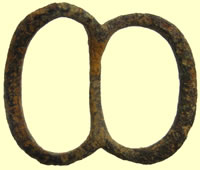 |
||||||||
| 1918 George V milled silver sixpence | 19thC Essex regiment button | 1500-1650 buckle | ||||||||
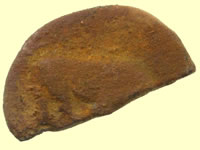 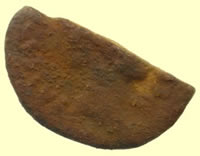 |
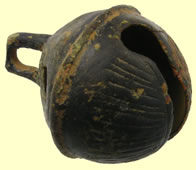 |
|||||||||
Roman silver coin sent for ID - cooking to remove crust Rev Bull The Flavians (Vespasian, Titus, Domitian) issued several coins with very little legend on the reverse and an animal (there was more than one type) It would help a lot if the legend fragment on the obverse turns out to help indicate whose coinage roster we need to be searching. For now, I have only the very shaky guess that it might be one of the Flavians. Mark |
Lots of nice decorated crotal bells turning up | |||||||||
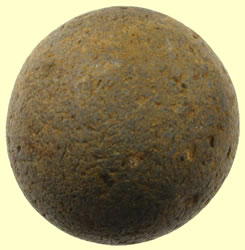 |
||||||||||
| Great eyeball find 16thC stone caronade shell | ||||||||||
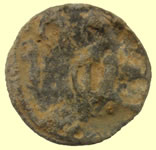  |
  |
|||||||||
| Roman lead token | Alexander II 1214-49 Scottish hammered silver half penny | |||||||||
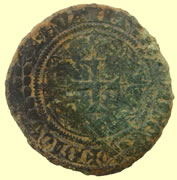 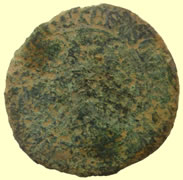 |
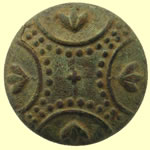 |
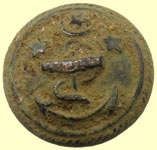 |
||||||||
| 15thC French jetton - leafty ornaments around a central cross | Georgian button |
|
||||||||
Primary Saxon silver sceat 600- 700 AD - sent to Fitzwilliam museum for recording and ID Cooking to remove crust
1.28g, 11.58mm |
||||||||||
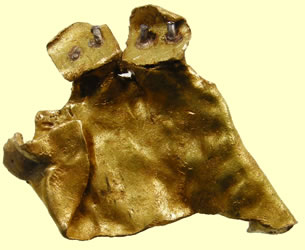  |
||||||||||
19thC gold denture plate 5.46g, 32.8mm W |
||||||||||
 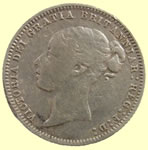 |
 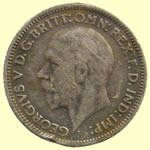 |
||
| 1877 Victoria milled silver sixpence | 1930 George V millled silver sixpence | ||
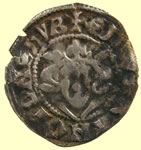 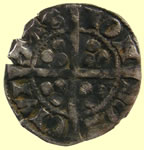 |
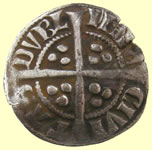 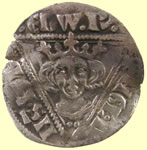 |
||
1344 Edward III hammered silver half penny - Florin coinage Obv EDWAR ANGL DNS HYB Rev CIVI/TAS/LON/DON London mint |
Irish 1279-1301 Edward 1st hammered silver penny - Trefoil of pellets on Kings breast, pellet at start of Obv legend Obv EDWR ANGL DNS HYB Rev CIVI/TAS/DUBL/INIE - Dublin mint |
||
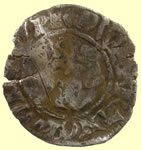 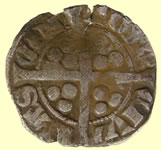 |
 |
 |
|
1344 Edward III hammered silver half penny - Florin coinage Obv EDWAR R ANGL DNS HYB Rev CIVI/TAS/CAN/TOR - Canterbury mint |
St March & St John Vol - Plymouth college | Circa 1650-1720 | |
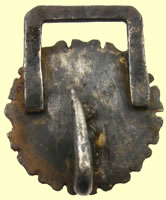 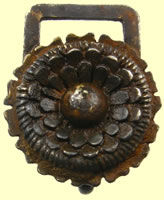 |
|||
Large 16thC Tudor gilded silver clothing fastener - reported as treasure to museum 9.27g, 28.53mm L Treasure number for this is 2012 T743 |
|||
|
|||
| Restored post 1700 silver ring | |||
 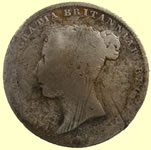 |
 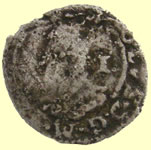 |
||
| 1846 Victoria milled silver sixpence | 1634 Charles 1st hammered silver penny | ||
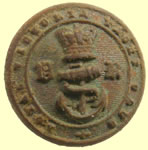 |
 |
 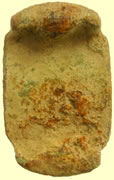 |
|
| 19thC Royal Victoria Yacht club | Victorian Silver hunting badge | 17thC decorated belt slide | |
  |
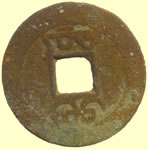 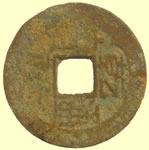 |
||
| 1634 Charles 1st hammered silver penny | 19thC Chinese cash coin | ||
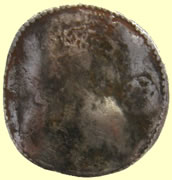 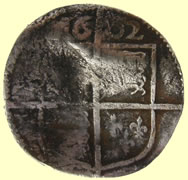 |
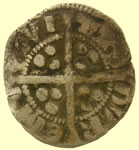 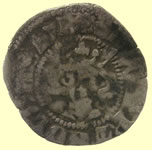 |
||
| 1602 Elizabeth 1st hammered silver sixpence | 1279 Edward 1st hammered silver penny - Cross Moline - Class 10cf2 Obv EDWAR ANGL DNS HYB Rev CIVI/TAS/DVR/EME - Durham mint |
||
Possible Roman copper alloy votive offering - 17.7g, 50.02mm L |
|||
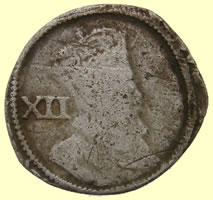 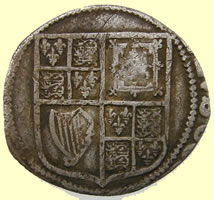 |
 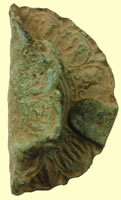 |
||
| 1603 James 1st hammered silver shilling (12 pence) | Georgian sun dial face | ||
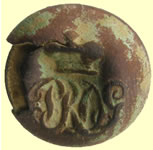 |
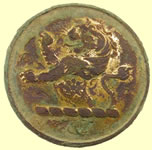 |
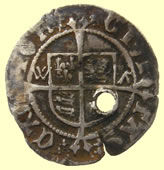 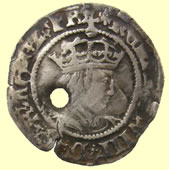 |
|
| 19thC Dragoon guards button | 19thC livery button | 1526-44 Henry VIII hammmered silver half groat- 2nd coinage - WA by shield Archbishop Warham CIVI/TAS/CAN/TOR - Canterbury mint |
|
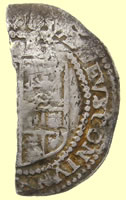 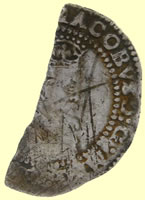 |
  |
||
| 1603 James 1st hammered silver shilling (12 pence) | 1215 Henry III hammered silver short cross penny | ||
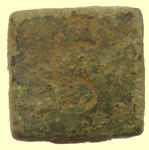 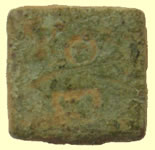 |
 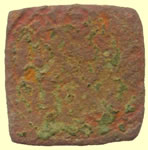 |
||
17thC 1 dram apothecary weight |
1578 Dutch low countries Antwerp hand coin weight | ||
 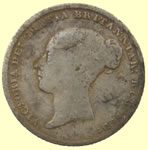 |
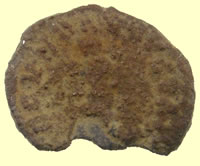 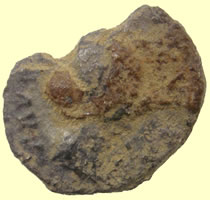 |
||
| 1844 Victoria milled silver sixpence | 2ndC Roman silver coin - cooking to clean of crust | ||
  |
 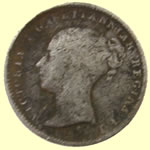 |
||
| 1855 Victoria milled silver four pence | 1842 Victoria milled silver four pence | ||
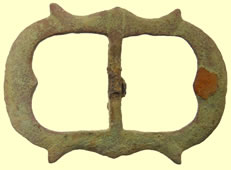 |
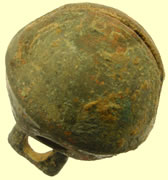 |
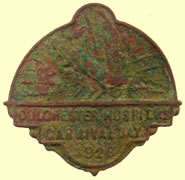 |
|
| Circa AD 1600 - 1699 | 17thC crotal bell | 1926 Colchester carnival badge | |
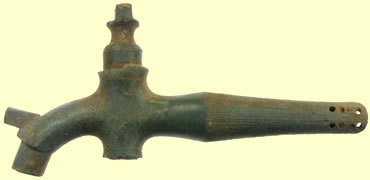  |
|||
| Complete post medieval barrel tap and spigot + key | |||
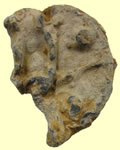 |
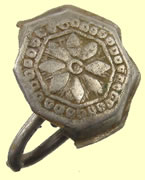 |
 |
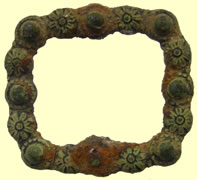 |
| 15thC lead token type 2 | 18thC silver cufflink | Georgian silver gilded cufflink | C AD 1650-1720 |
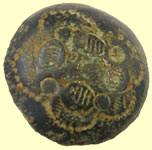 |
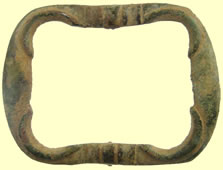 |
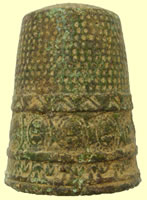 |
|
| 17thC button | C AD 1650-1720 | 17thC thimble | |
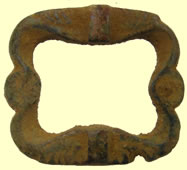 |
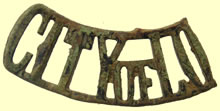 |
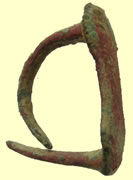 |
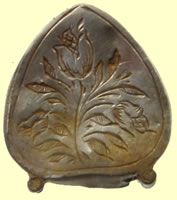 |
| Georgian buckle | City of London regiment lapel badge | 1500-1700 mount | Victorian silver locket |
Great condition 3rdC Roman bronze coin sent for ID 18.17mm, 2.27g
This piece is a little different, but mostly that is because this emperor had such a short reign (it is thought - records from the era are sparse and not too dependable.) This appears, as close as I can tell, to be Quintillus, the younger brother of Claudius Gothicus. Quintillus reigned for somewhere between a few weeks and a few months after Claudius died in 270. At the longest, he would have been emperor from about mid-August to somewhere around the end of October or the beginning of November, 270. Mark |
|||
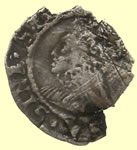 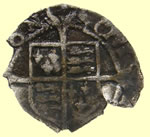 |
  |
||
| 1560-1 Elizabeth 1st hammered silver penny | 16thC Elizabeth 1st hammered silver half groat | ||
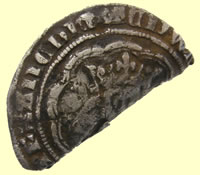 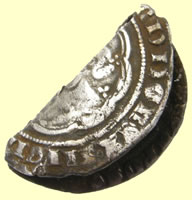 |
  |
||
Taco'd 1369-77 Edward III hammered silver groat - Post treaty period - Standard F type Obv EDWARDVS REX ANGL FRANC D HIB Rev CIVI/TAS/LON/DON - London mint |
1821 George IV millled silver sixpence | ||
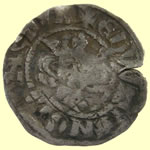  |
|||
1344 Edward III hammered silver penny - florin type Obv EDWAR ANGL DNS HYB Rev CIVI/TAS/CAN/TOR - Canterbury mint |
|||
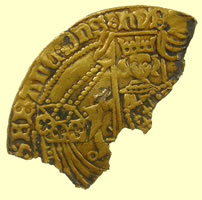 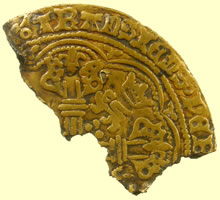 |
|||
1422-30 Henry VI, hammered gold noble , first reign (1422-61), Annulet issue (1422-30), London Mint, Obv **** Z FRANC DNS HYB 2.31g, 35.6gn, 28.1mm |
|||
  |
|||
First King Eadred (also known as Edred) Saxon silver penny we have found 946 AD Eadred Saxon hammered silver penny - Crowned bust type - sent to Fitzwilliam musuem for ID and recording Obv EADRED REX Rev Small cross pattee - Moneyer name does not appear in my ref books 20.42mm, 1.30g King Edred was born in about 923 AD, a son of King Edward the Elder by his third marriage. He succeeded his brother, King Edmund I, in 946. Like both his elder brothers, Edred enjoyed military success over the Vikings. However, Edred was a strongly religious man with bad health (he had a stomach ailment and could barely eat). He died on November 23, 955, at Frome in Somerset, and was buried at Winchester. He was succeeded by his nephew, King Edwy. Many thanks for this new find, which I have recorded as EMC 2012.0280. Best wishes, Martin
As dug
10-40 AD Cunobelin Celtic silver unit - 'cooking to remove crust' Cunobelin 'Horse-Dog' silver, ABC 2852 (extremely rare) is CCI 12.0389
As dug
Good example showing how thick the crust is left to 'cook' off. Cunobelin amphora type unit, ABC 2849, not in VA or BMC. Extremely rare
As dug
Bust detail is showing through the crust - lots more 'cooking' to do yet
1stC BC Cunobelin Celtic silver coin - 'cooking' it to remove crust C4 (M215, V2045, BMC 1863-65) Obv. head 1., spiky hair floating behind head. Variety with pointed ?bearded chin has CAM in front, VL behind head; others with less pointed chin have CAMV or CAMVL in front. Pellet border. Rev. seated Victory r., holding bowl in outstretched r. hand. Pellet in ring in front. CVNO below exergual line. Pellet border. |
|||
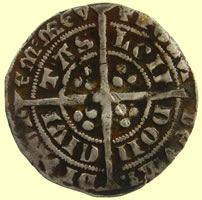  |
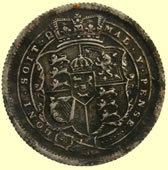 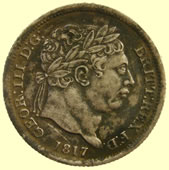 |
||
1356 -61 Edward III hammered silver groat - 4th issue Pre Treaty period - Cross 3, Series G Top arches not fleured - annulet stops Obv + EDWARD D G REX ANGL Z FRANC D HYB Rev CIVI/TAS/LON/DON - London mint 4.50g, 26.62mm |
1817 George III milled silver shilling ( 12 pence) | ||
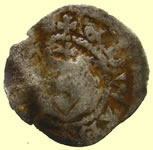 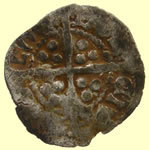 |
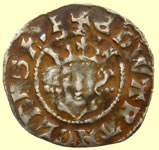 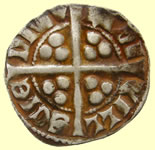 |
||
1300 Edward Ist hammered silver farthing - New issue inner circle both sides - Type 28 Obv EDWARDVS REX Rev CIVI/TAS/LON/DON - London mint 0.26g, 11.28mm |
1307 -27 Edward II hammered silver penny - Cross pattee - Rounded back E - Broken pearl to crown left - Class 11 Obv EDWAR ANGLE DNS HYB Rev VILL/SCIE/DMV/NDI - Bury St Edmunds mint 1.34g, 18.53 |
||
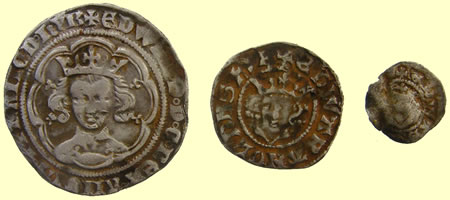 |
|||
| Size comparison, Ed III groat (4 pence), Ed II penny, Ed 1st farthing (1/4 penny) | |||
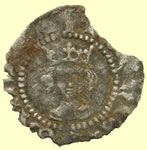  |
 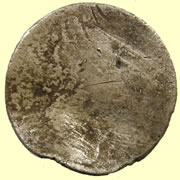 |
||
1413- 22 Henry VI hammered silver half penny - Roundabout cross - 2 annulets in oppositing quadrants on reverse cross in CIVI and LON - Type 12 Obv + HENRICxREXxANGLE Rev CIVI/TAS/LON/DON - London mint 13.21mm, 0.33g |
Scottish 1695 William III milled silver 5 shillings ( 60 pence) | ||
  |
 |
||
1344 Edward III hammered silver penny - florin type Obv EDWAR ANGL DNS HYB Rev CIVI/TAS/LON/DON - London mint |
17thC fish scale crotal bell | ||
 |
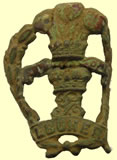 |
||
| 1500-1650 buckle | Army badge possible 23rd Royal Welsh Fusiliers - Depicts Fleur de Lys & King's crown with wording ALBUHERA – Battle of Albuher 16th May 1811 |
||
 |
  |
||
| Roman wedge pendant | 1180- 1189 Henry II hammered silver short cross penny Class 1b Obv HENRICVS REX Rev HENRI ON LVD - Moneyer Henri of London mint |
||
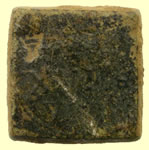 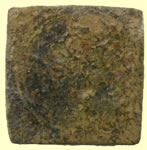 |
 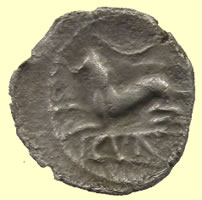 |
||
1619-25 Coin weight - Spur Ryal of James 1st 6.4gm 3rd coinage |
10-40 AD Cunobelin Celtic silver unit - 'cooked' to remove crust Cunobelin 'Horse-Dog' silver, ABC 2852 (extremely rare) is CCI 12.0389 |
||
 |
 |
 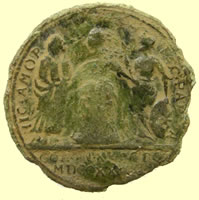 |
|
| Victorian Yacht club button | 19thC Essex regiment button | Stunning Queen Caroline wife of George II (1727-1760), The Official Coronation Medal, 11 October 1727, 24mm, by John Croker, draped bust of Caroline left with lovelock on neck, rev., Queen attended by Religion and Britannia, HIC. AMOR HAEC PATRIA (This, my affection; this, my country), in exergue, CORON XI OCTOB MDCCXXVII, (MI II,8) | |
  |
|||
| Iron Age pot fragment with horse design | |||
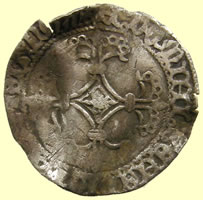  |
  |
||
1475 Dutch -Karel de Stoute -silver DOUBLE STUIVER |
Very unusual ealry clog fastener probably 17thC | ||
 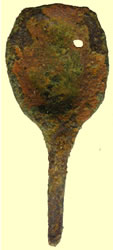 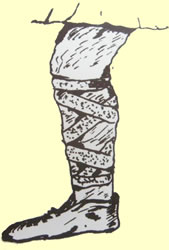 |
|||
| Staggeringly find - c8thC Saxon hooked fastener used on their leg bindings - this has a Roman head design | |||
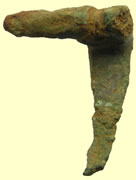  |
 |
||
| 2ndC Roman fibular brooch | Crude figure scratched into a piece of slate holding a spear above head - Kansas Barry was doodling LOL | ||
 |
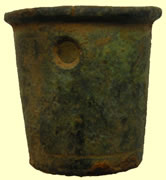 |
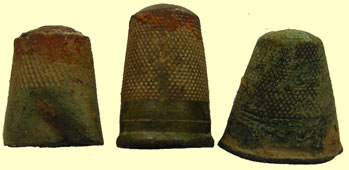 |
|
| Medieval beehive thimble | 18thc bullion cup weight | Georgian thimbles | |
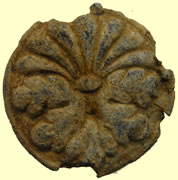 |
 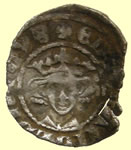 |
||
| 17thC lead carriage mount | 1344 Edward III hammered silver penny - florin type Obv EDWAR ANGL DNS HYB Rev CIVI/TAS/LON/DON - London mint |
||
 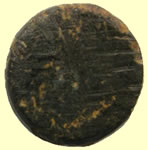 |
  |
||
| 1464 -71 Rose and Crown type coin weight - gold half Ryal | 1249 Scottish Alexander III hammered silver penny Moneyer Ion Cokin of Perth mint |
||
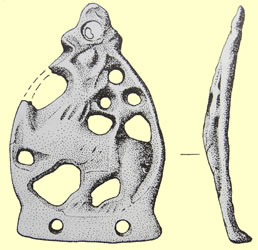 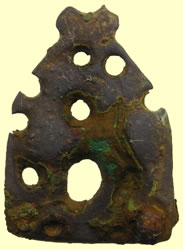 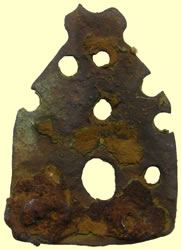 |
|||
c10thC Saxon gilded stirrup mount - Type 12 openwork Lion |
|||
 |
 |
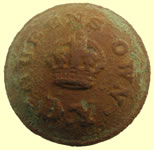 |
|
| Georgian watch winders | Unknown military button | Very unusual Queens Own Regiment button | |
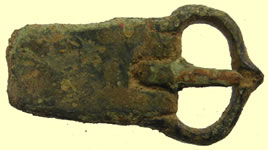  |
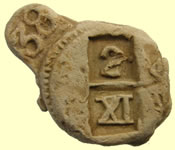 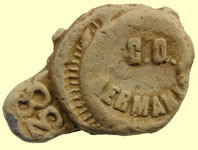 |
||
| Medieval buckle with integral plate | Unusual German lead bale seal | ||
 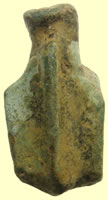 |
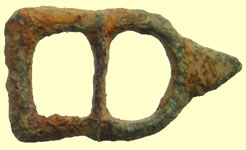 |
 |
|
| Medieval pot foot | 1500-1650 buckle | 18thc lead token - anchor | |
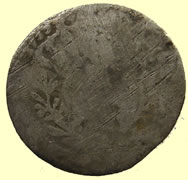 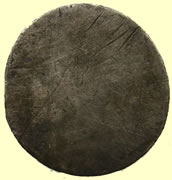 |
  |
||
| 1735 Continental worn milled silver coin - possibly Danish | 1351-2 Edward III hammered silver groat – Cross 1 , annulet stops, open C & E Series B - Obv CIVI/TAS/LON/DON London mint |
||
  |
|||
| Monster sized 18thC toy cannon - 4 inches long with a very unusual mount | |||
 |
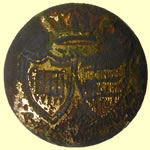 |
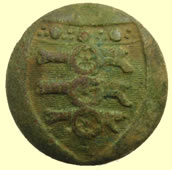 |
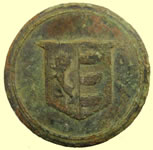 |
RN Capt / Commander - 1812 |
Essex button | 18thC Royal artillery burron | Essex button |
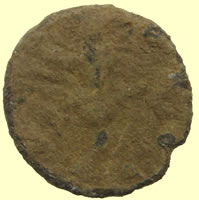 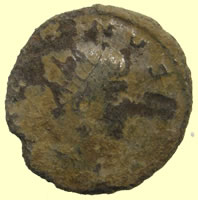 |
 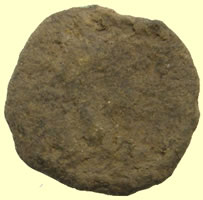 |
||
| Washed Roman silver coin - cooking to clean up | Roman silver coin - cooking to clean up | ||
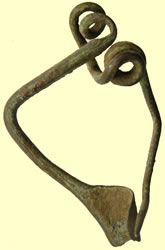 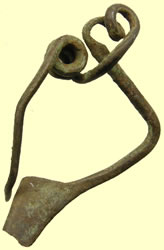 |
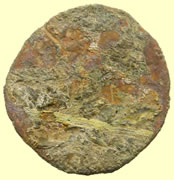 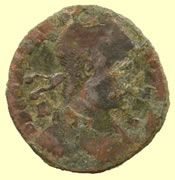 |
||
| 2nd C - 1st BC La Tene type Roman fibular brooch | 4thC Constantine Roman copper coin - sent for ID I can't give you "Chapter and verse" on this one, but I can tell you that it's one of the early-issue Majorinae (silver-washed billon) from the reform of 348 - This is when the various FEL TEMP REPARATIO types began to be issued. They quickly decreased in diameter and weight from this piece's module, but this fact places this very early in the series, overall. We'd have to check to see when the letters were added to the obverse at various mints to tell you for sure - or dial it in tighter - but my guess would be that this is about (read: "no later than") 350 AD. There were several different patterns of the Fel Temp's at this point - and in addition to the familiar soldier spearing fallen horseman (which, by the way, is quite rare for Constans - although we can't be certain that this is a fallen horseman or Constans) there were 3 or 4 other Fel Temp types, "Emperor & 2 captives", "Soldier leading youth from hut" & "Emperor on prow of galley steered by Victory", are the most common after the Soldier & fallen horseman pattern. There were also some other legend/types for the Majorina module issued at this point in time. Without being able to tell anything from the reverse, I can't really be any more specific. Mark |
||
  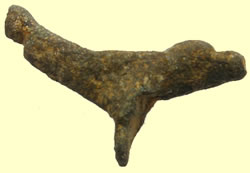 |
|||
| Celtic bucket mount | |||
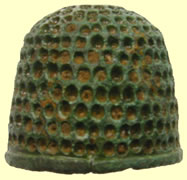 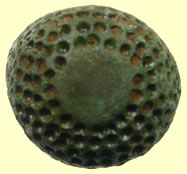 |
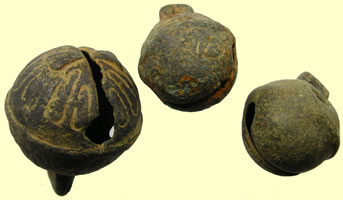 |
||
| Medieval beehive thimble | Nice group of early crotal bels | ||
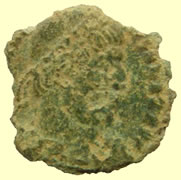 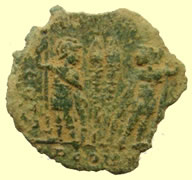 |
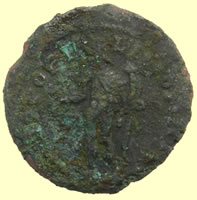 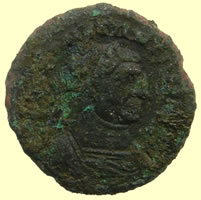 |
||
Mid 4thC Hosue of Constantine Roman bronze - 2 soldiers standing Constantine I (307-337) "Æ 3" - Billon Centenionalis from Mint of Arles (PCONST - Arles was known as "Constantiniana" at the time in honor of Constantine's sister) GLORIA EXERCITVS - 2 soldiers standing facing flanking 2 legionary standards - each holds spear in outer hand and rests on shield with inner hand. Mark |
Large Roman bronze - just sent for ID 29.54mm, 7.20g |
||
 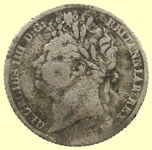 |
 |
||
| 1821 George IV milled silver sixpence | Pre 1900 London Dockyard Company button | ||
 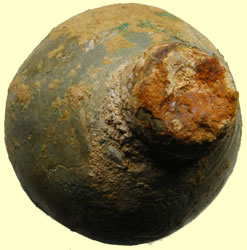 |
|||
Huge Medieval steelyard weight ? 708 g, 51mm dia Heavy bronze weights were used for weighing with a 'steelyard': they were slid along a balance arm until they counterbalanced the object being weighed |
|||
 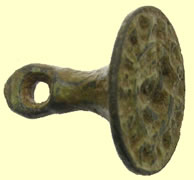 |
 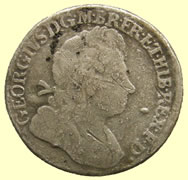 |
||
| Medieval seal matrix | 1720 George 1st milled silver shilling | ||
 |
|
||
| Military button - possible medeical corp - nto researched it yet | Medeival book clasp | ||
  |
  |
||
1247 Henry III hammered silver voided long cross 1/4 penny- Moneyer Nicole |
Scottish Alexander II 1214- 1249 hammered silver half penny | ||
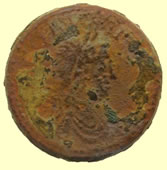 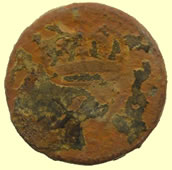 |
  |
||
| 1696 William III gold guinea coin weight - 7.73g | 17thC sword hanger | ||
 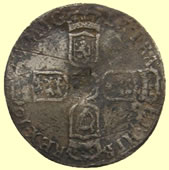 |
  |
||
| 1697 William III milled silver sixpence | 1697 William III milled silver sixpence | ||
|
|||
Roman cooking silver - just sent off for ID Thedetails are still a bit fuzzy, but I can tell you that it's a denariusof Hadrian (117-138 AD.) and the reverse type is TELLVS STABIL. Awoman - the personification of Tellus - standing left holding aplow-handle and a rake - 2 corn plants protrude from the ground behindher. This is a product of the Mint at Rome in 133 AD. Theobverse reads (or should read) HADRIANVS AVG COS III P P - and if you study itclosely, you can tell that it does have that legend.
|
|||
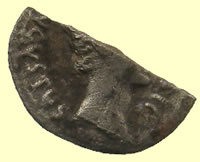 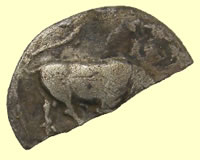   |
|||
Roman 'cooked' silver cut half sent for ID Your halfdenarius is an issue of Augustus from the mint at Lugdunum (Lyon), c15-13 BC. The full obverse legend should be AVGVSTVS DIVI F("son of The Deified [Julius]") The reverse shows a bull buttingto the right, and the exergual inscription which we don't have any partof is "IMP X".> |
|||
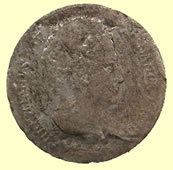 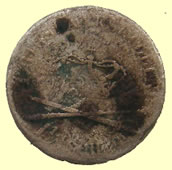 |
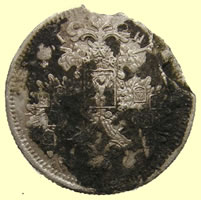 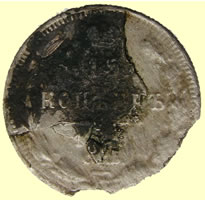 |
||
| 1841 Danish 4 silver Skilling | This was just a black disc but is 'cooking' up to be a Continental billion silver coin | ||
As dug and 'cooking' pics
Primary Saxon silver sceat 600- 700 AD - sent to Fitzwilliam museum for recording and ID |
|||
Penn Dennis' crispy Roman silver is start to 'cook' up nice after 3 months in the pot !! Still more crust to remove but I sent it off for ID. Faustina Sr.for him - a posthumous piece (as is the majority of her coinage) for the wifeof Antoninus Pius. She died in 141, only 3 years into Antoninus' longreign, and had significant posthumous coinages struck in her honor, first byAntoninus Pius, then later by Marcus Aurelius - her son-in-law.
|
|||
Crispy Roman silver is start to 'cook' up after being in the cooker since March 2012
|
|||
Crispy Roman silver 'cooking' to remove crust |
|||
Some detail coming through on this early BC Roman silver |
|||


